
Johann Carl Friedrich Gauss was a German mathematician, astronomer, geodesist, and physicist who contributed to many fields in mathematics and science. Gauss ranks among history's most influential mathematicians and has been referred to as the "Prince of Mathematicians". He was director of the Göttingen Observatory and professor for astronomy for nearly half a century, from 1807 until his death in 1855.
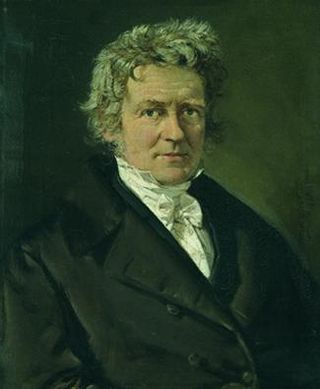
Friedrich Wilhelm Bessel was a German astronomer, mathematician, physicist, and geodesist. He was the first astronomer who determined reliable values for the distance from the sun to another star by the method of parallax. Certain important mathematical functions were named Bessel functions after Bessel's death, though they had originally been discovered by Daniel Bernoulli before being generalised by Bessel.
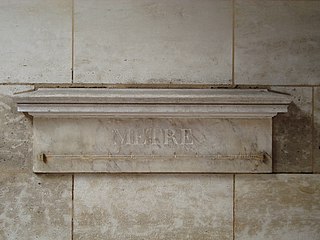
The metre is the base unit of length in the International System of Units (SI). Since 2019, the metre has been defined as the length of the path travelled by light in vacuum during a time interval of 1/299792458 of a second, where the second is defined by a hyperfine transition frequency of caesium.

Prof Heinrich Christian Schumacher FRS(For) FRSE was a German-Danish astronomer and mathematician.

Ahrensburg is a town in the district of Stormarn, Schleswig-Holstein, Germany. It is located northeast of Hamburg and is part of the Hamburg Metropolitan Region. Its population is around 31,000. Schloss Ahrensburg, the town's symbol, is a Renaissance castle dating from 1595.

Glückstadt is a town in the Steinburg district of Schleswig-Holstein, Germany. It is located on the right bank of the Lower Elbe at the confluence of the small Rhin river, about 45 km (28 mi) northwest of Altona. Glückstadt is part of the Hamburg Metropolitan Region.
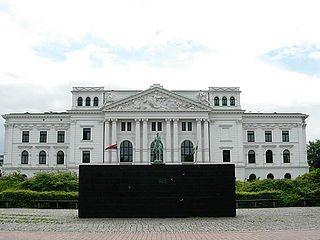
Altona, also called Hamburg-Altona, is the westernmost urban borough (Bezirk) of the German city state of Hamburg. Located on the right bank of the Elbe river, Altona had a population of 270,263 in 2016.

Bad Bramstedt is a municipality in the district of Segeberg, in Schleswig-Holstein, Germany. It is situated approximately 40 km north of Hamburg. It is famous for its statue of Roland and its rheumatism clinic.

Johann Georg Repsold was a German manufacturer of scientific instruments, astronomer, and fireman. He began to make astronomic instruments mainly for his own use. His third son Adolf Repsold continued the well-known astronomical instrument firm as the A. & G. Repsold company, which later became A. Repsold und Söhne.

The Gymnasium Christianeum is a famous former Latin school in Hamburg, northern Germany. Founded in 1738 by King Christian VI of Denmark, it is now housed in a building planned by Danish designer Arne Jacobsen.

Astronomische Nachrichten, one of the first international journals in the field of astronomy, was established in 1821 by the German astronomer Heinrich Christian Schumacher. It claims to be the oldest astronomical journal in the world that is still being published. The publication today specializes in articles on solar physics, extragalactic astronomy, cosmology, geophysics, and instrumentation for these fields. All articles are subject to peer review.
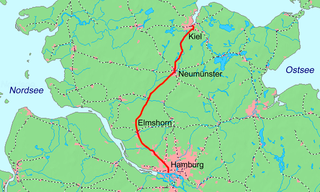
The Hamburg-Altona–Kiel railway is one of the most important main line railways of the states of Schleswig-Holstein and Hamburg in Northern Germany. The line runs through the region of Holstein and connects the cities of Hamburg, Elmshorn, Neumünster and Kiel. The 105 km (65 mi) long standard gauge double track electrified railway line is now owned by DB Netz.
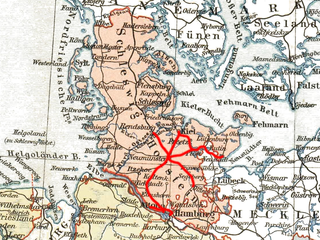
The Altona-Kiel Railway Company was a joint-stock company, established under the law of Denmark in personal union with the Duchy of Holstein, that built and operated an 105 km railway line between Altona and the Baltic Sea port city of Kiel. Altona was at that time the second largest city under Danish rule and the railway line was the first built in Danish-controlled territory.
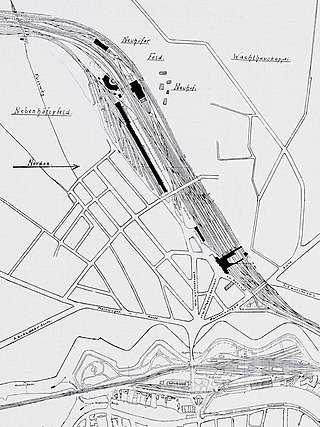
The Lübeck-Büchen Railway was a German railway company that built railway lines from Lübeck to Büchen and to Hamburg in the 19th century.
Altona Bloody Sunday is the name given to the events of 17 July 1932 when a recruitment march by the Nazi SA led to violent clashes between the police, the SA and supporters of the Communist Party of Germany (KPD) in Altona, which at the time belonged to the Prussian province of Schleswig-Holstein but is now part of Hamburg. Eighteen people were killed. The national government under Reich Chancellor Franz von Papen and Reich President Paul von Hindenburg used the incident as a rationale to depose the acting government of the Free State of Prussia by means of an emergency decree in what came to be known as the Prussian coup d'état of 20 July 1932.
Piter Poel was a diplomat who in his later years became the publisher if the "Altonaischer Mercurius" (newspaper). A couple of years after his baptism his Godfather, Peter, Duke of Holstein-Gottorp, became the Tsar of Russia.
Johann Wilhelm Gottlob Buzengeiger was a university mechanic, optician and watchmaker in Tübingen.
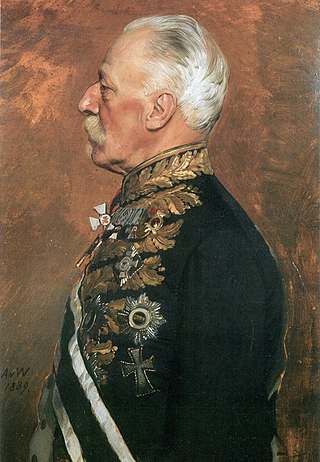
Daniel Christian Friedrich Krüger was a diplomat in the service of the city state of Lübeck and also jointly of the Hanseatic cities of Lübeck, Hamburg and Bremen. He was born in Lübeck on 22 September 1819 and died in Berlin on 17 January 1896.
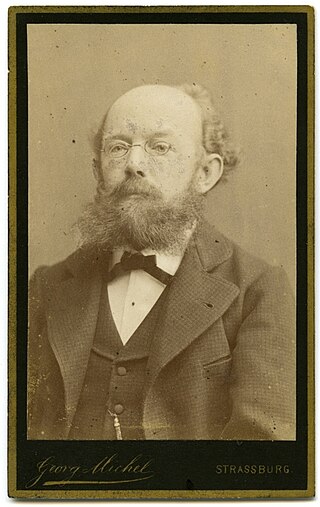
Adolph Christian Wilhelm Schur, RAS Associate was a German astronomer and professor of astronomy at the University of Göttingen. He held important positions at multiple observatories throughout his career, namely deputy director of the Strasbourg Observatory and director of the Göttingen Observatory. His main work was in astrometry, although he focused on publishing astronomical catalogues in his later life.

The Altona Observatory was an astronomical observatory situated in the Palmaille, in Altona, Hamburg. The observatory was founded by Heinrich Christian Schumacher in 1823 and continued to operate until 1871, 21 years after his death. It closed due to funding being cut off following the cession of the 'Elbe Duchies' of Schleswig, Holstein, and Saxe-Lauenburg by Denmark to Austria and Prussia following the Second Schleswig War.


















